Best Beaches in California

Searching for the best beaches in California to visit on your next day trip or vacation? Well, you are in the right place! I’ve found California’s beaches to be some of the most breathtaking and unforgettable places to enjoy the ocean. Whether it’s the laid-back surf towns, lively pier, or quiet a cove tucked away from the crowds, we've found a stretch of sand here for every mood. Here are the beaches I recommend, and I hope you’ll enjoy them too.
Best Beaches in Southern California
I notice that when friends ask me about what is the best beach to visit in California, they usually mean Southern California. It's without a doubt true that some of the best beaches in all of USA are located here! I hope you will enjoy reading about my favorites and have a nice time there yourself.
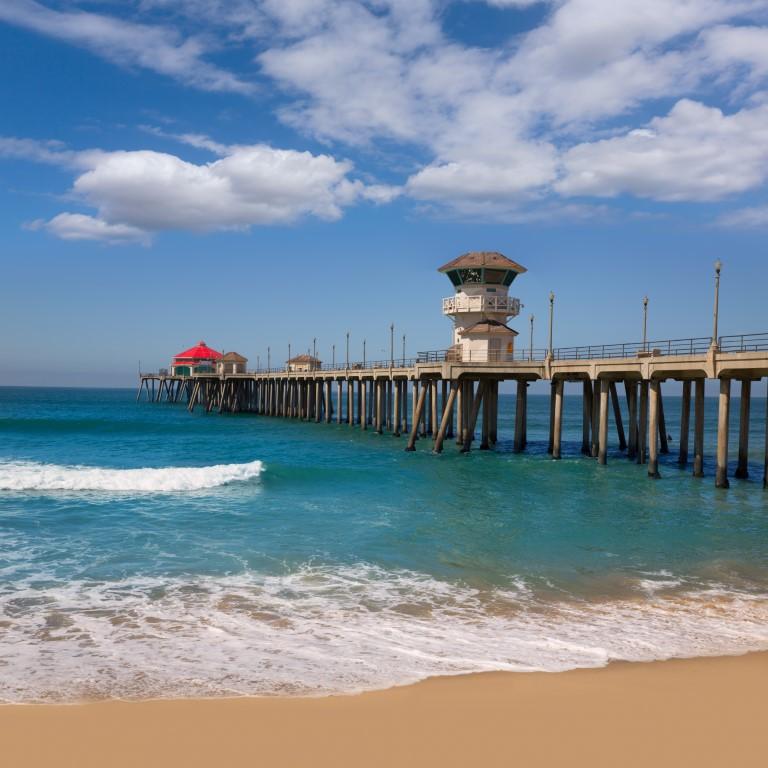
1. Huntington State Beach
I thought this was one of the best beaches in California with its miles of soft golden sand, and steady Pacific waves perfect for surfers!
Just an hour from LA, we loved the Southern California coast beach culture here with volleyball games, bonfires, and the scent of sunscreen.
An easy 10-minute drive from central Huntington Beach (nicknamed “Surf City, USA”), I based myself at the hip 4-star Pasea Hotel & Spa for two relaxing days, where we especially loved the ocean views!
- Location: In Huntington Beach, California, along Orange County’s Pacific coast between the Santa Ana River and Beach Boulevard
- Location: Location Map
What I loved best:
I loved that I could start my day with a barefoot walk on the broad beach, watched surfers, and then biked on the paved 8.5-mile Huntington Beach Bike Trail that hugs the shoreline.
In addition, I enjoyed exploring Bolsa Chica Ecological Reserve with its saltwater marshes teeming with herons and egrets.
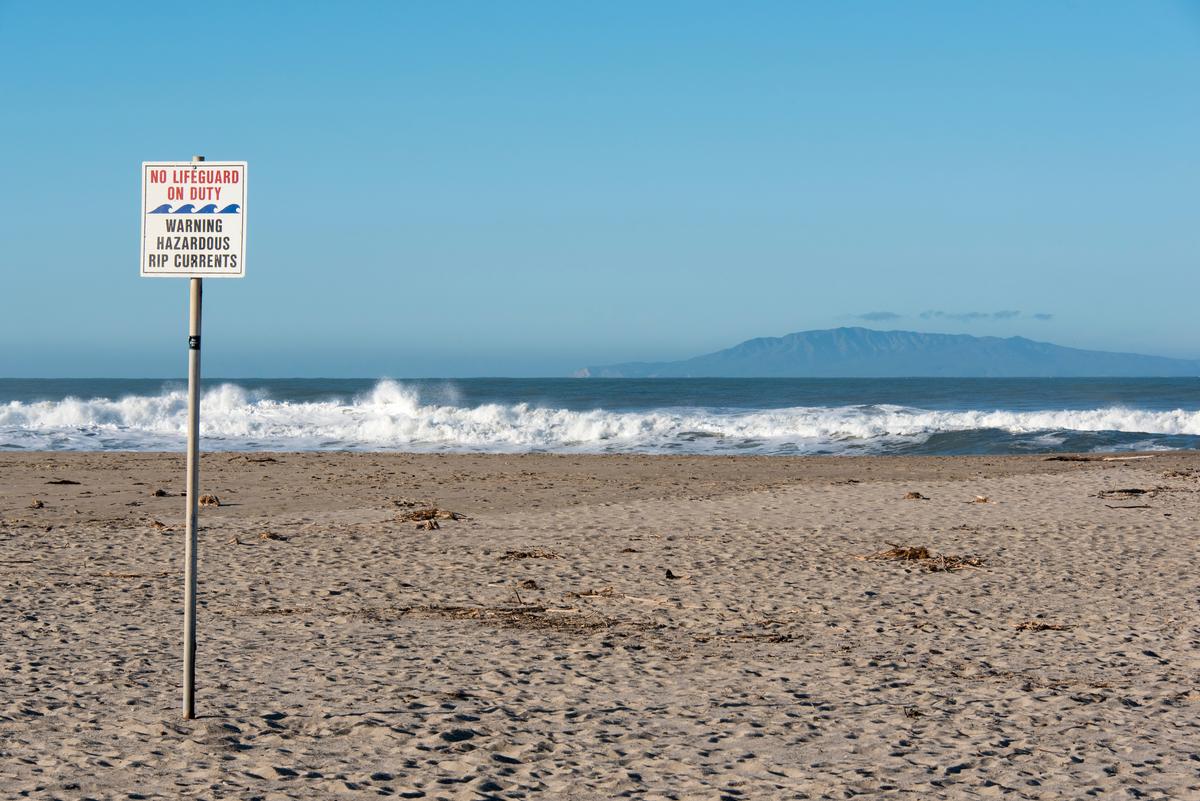
2. Mandalay State Beach
This is one of my favorite Southern California beaches, just 10 minutes from downtown Oxnard! My pace here was beautifully unhurried, starting with morning walks along the nearly empty shoreline, afternoons exploring the Mandalay State Beach dunes and wildlife preserve, and evenings watching sunsets with Channel Islands on the horizon.
- Location: In Oxnard, California, along Ventura County’s Pacific coast near Mandalay State Beach
- Location: Map & Directions
What I loved best:
Just a few minutes’ drive from Oxnard in Ventura County, I settled in for a low-key coastal escape in a King sized room at the beachfront Zachari Dunes Resort for two days, a laid-back 4-star stay with direct ocean access.
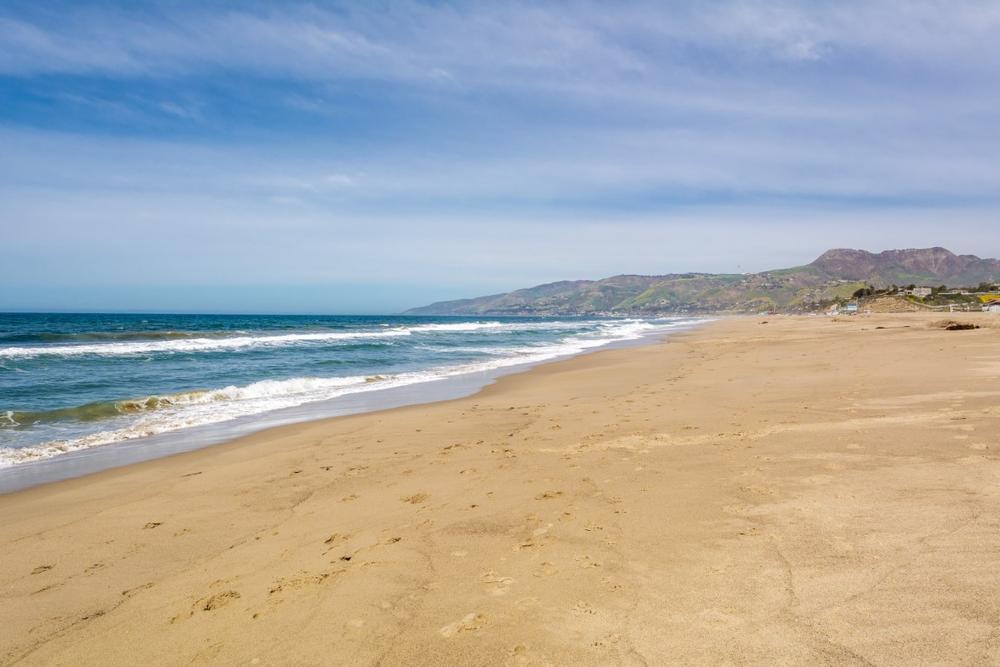
3. Zuma Beach
Here is Malibu at its most wide-open and sun-splashed and I can't wait to go back soon! This Southern California beach is a sweeping expanse of golden sand framed by gentle bluffs and the sparkling Pacific, with a lively yet laid-back atmosphere that made it feel like Southern California summer distilled into one place.
- Location: In Malibu, California, along the Pacific Coast Highway on the western end of Santa Monica Bay
- Location: Location Map
- Zuma Beach website
What I loved best:
Zuma Beach is one of my favorite California beaches!
It had that quintessential beach-town energy: volleyball nets, surfers carving waves, families with picnic baskets, and long horizons that seemed to stretch forever.

4. Santa Monica Beach
While visiting with my husband and son in the spring, I thought that this was my favorite California beach for dramatic sunsets while we watched the sky shifting from orange to pink to deep indigo. At the same time, the pier lights turned on, and we stayed for the buzzing boardwalk energy well into the night.
Just steps from downtown Santa Monica, we stayed in an affordable vacation rental for five care-free days. My days unfolded with a perfect rhythm: sunbathing on the beach, strolling along the historic Santa Monica Pier (complete with its colorful Ferris wheel and arcade games), and exploring Third Street Promenade’s mix of shops, street performers, and open-air dining.
- Location: In Santa Monica, along Los Angeles County’s Pacific coastline just west of downtown Los Angeles
- Check prices at 5-star Shutters on the Beach (a AAA Four Diamond winner)
- Map & Directions
- Santa Monica Beach website
What I loved best:
Biking down the 22-mile Marvin Braude Bike Trail toward Venice Beach with my son was my personal highlight.
A downside? Runoff sometimes pushes bacteria levels high enough to trigger advisories for this area so keep your eye on the news.

5. Carlsbad State Beach
This was my favorite California beach for a mellower vibe, backed by low sandstone bluffs and fronted by gentle Pacific waves!
My days here were a mix of lounging on the beach, cycling along the oceanfront Coast Highway, and venturing into the charming downtown, where boutique shops and cafes spilled onto leafy sidewalks.
- Location: In Carlsbad, California, along northern San Diego County’s Pacific coastline
- Map & Directions
- Carlsbad State Beach website
What I loved best:
My personal highlight was catching the glowing sky as the sun sank directly into the Pacific, the bluffs giving the whole scene a golden frame.
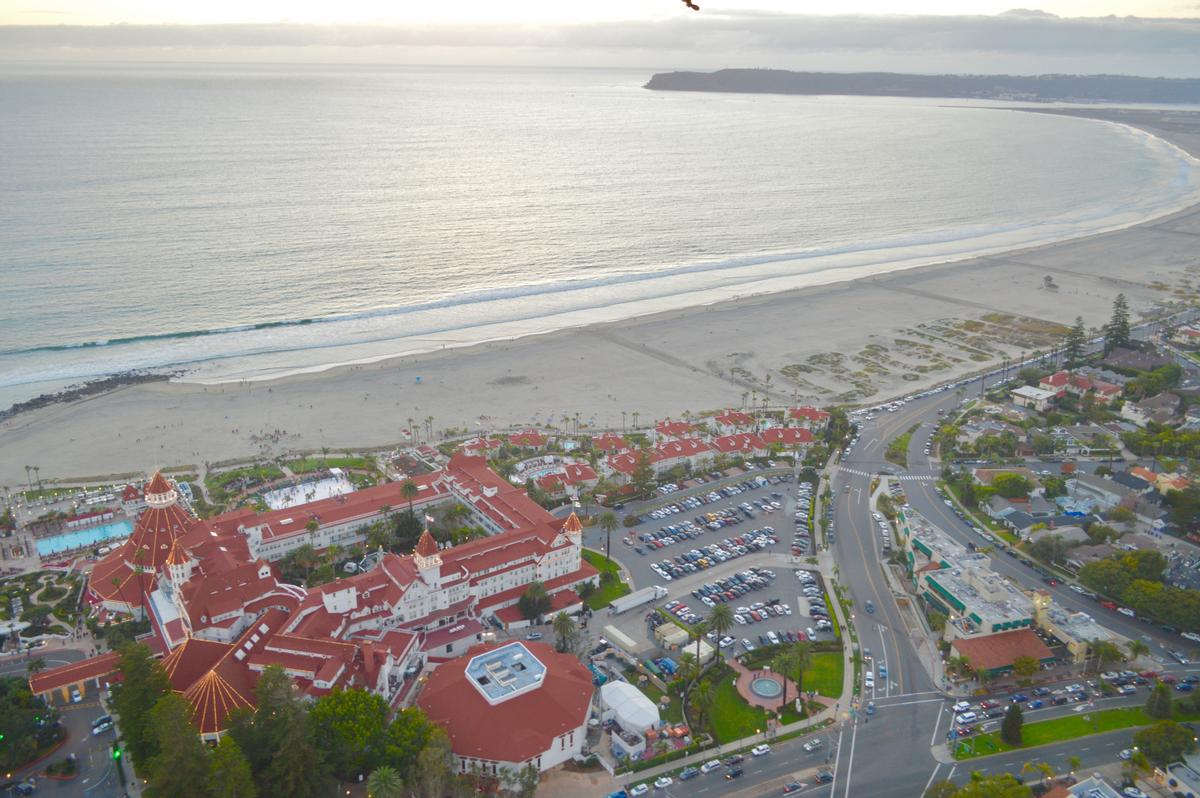
6. Coronado Beach
I thought this was the best family beach in California when we moved to San Diego. This famous beach has a wide shoreline where the sand actually (no, really!) sparkles thanks to flecks of mica. The historic Hotel del Coronado is THE place to stay here. It rises like a fairytale castle at the water’s edge and you can't miss it! It’s elegant yet easygoing, with gentle surf that draws families, swimmers, and a pace that feels unhurried compared to San Diego.
- Location: On Coronado Island in San Diego, California, along the Pacific Ocean just across the bay from downtown San Diego
- Check prices at 4-star Hotel del Coronado
- Map & Directions
- Coronado Beach website
A downside? The only downside for me was the cost and how easily Hotel del Coronado sells out during holiday and summer weekends.
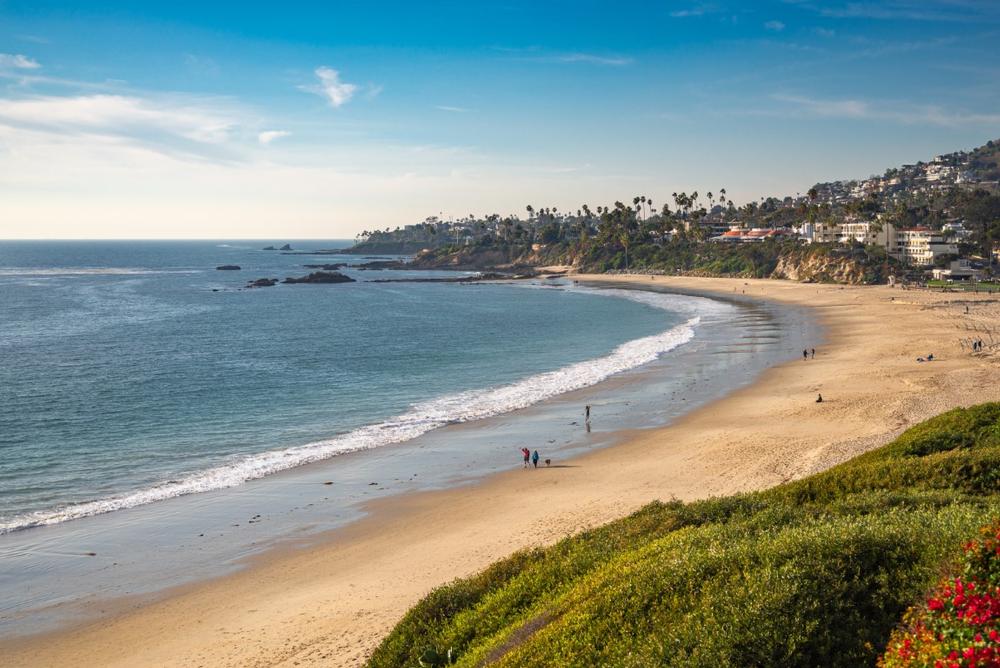
7. Crystal Cove State Park
I felt like I was stepping back into a quieter, more natural side of the Southern California coast here. I loved this California beach for its rugged bluffs, tidepools teeming with sea life, and a preserved historic beachside village that captures the charm of the 1930s and 40s.
- Location: In Orange County, between Newport Beach and Laguna Beach along the Pacific Coast
- Map & Directions
- Crystal Cove State Park website
What I loved best:
Unlike the bustle of Santa Monica or Huntington, this beach offers a wilder, more restorative vibe which is why I loved it! It's a blend of scenic hiking trails, dramatic Pacific views, and old-fashioned coastal nostalgia that I keep coming back for!
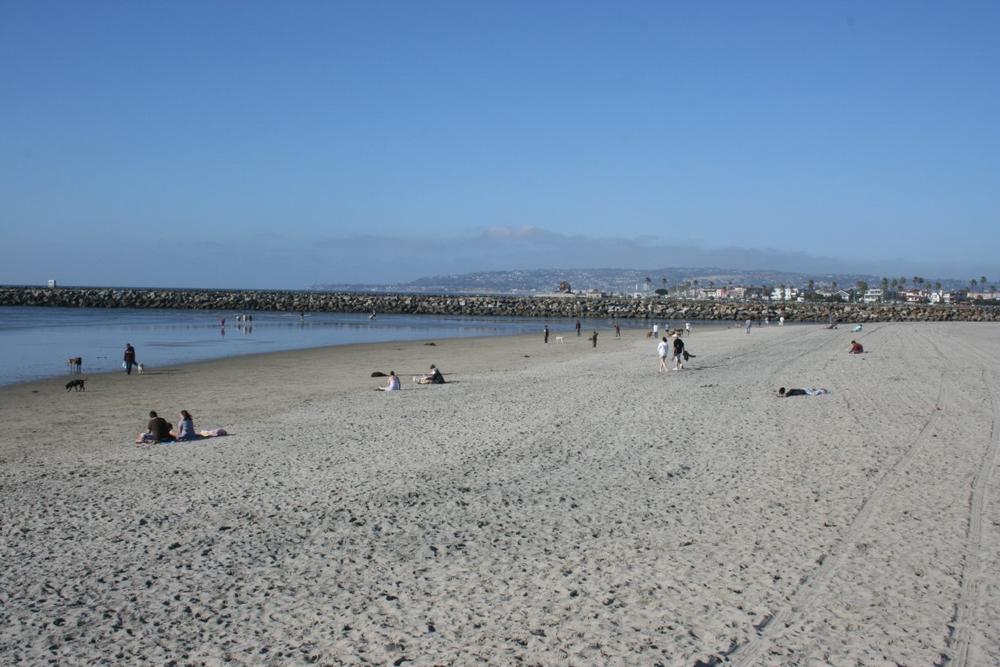
8. Dog Beach in San Diego
I think that this beach in San Diego radiates pure joy, a stretch of sand where surf, sun, and wagging tails all collide in one of the happiest corners of the coast. Instead of polished piers or historic resorts, this beach is all about freedom with dogs racing through the waves, frisbees sailing across the sky, and the soundtrack of laughter mixed with barking.
- Location: In Ocean Beach, San Diego, California, at the mouth of the San Diego River along the Pacific Ocean
- Location Map
What I loved best:
It has an easy, come-as-you-are vibe that makes it feel both playful and welcoming. I didn't have a pup of my own but the joyful vibe was contagios! Its a very nice spot to unwind!

9. La Jolla Cove
This place is one of California’s most enchanting seaside escapes, a jewel-box cove where turquoise waters lap against rugged sandstone cliffs, and playful sea lions bask in the sun just steps from your towel. It felt alive with marine energy yet serene enough to simply sit and take in the ocean’s endless rhythms.
- Location: In La Jolla, San Diego, California, along the Pacific Coast within the La Jolla Underwater Park
- Location Map
- La Jolla Cove website
What I loved best:
I started by walking along the blufftop paths of Ellen Browning Scripps Park and I wandered through the galleries, cafés, and boutiques of La Jolla Village.

10. El Matador Beach, Malibu
I thought this was one of Malibu’s most dramatic coastal treasures when I visited this month. After Zuma Beach, it's my close second favorite beach in this part of California. I loved this narrow ribbon of golden sand tucked beneath rugged cliffs, where sea-carved caves, natural stone arches, and giant rock outcroppings created a wild, cinematic backdrop that felt like stepping into a dream!
- Location: In Malibu, California, along the Pacific Coast Highway within the Robert H. Meyer Memorial State Beach area
- Location Map
What I loved best:
Just a breezy 20-minute drive up the Pacific Coast Highway from Santa Monica, I carved out a sun-drenched afternoon here and I thought it was one of the best beaches in California! The approach itself was unforgettable — descending steep wooden stairs that reveal the vast blue sweep of the Pacific.
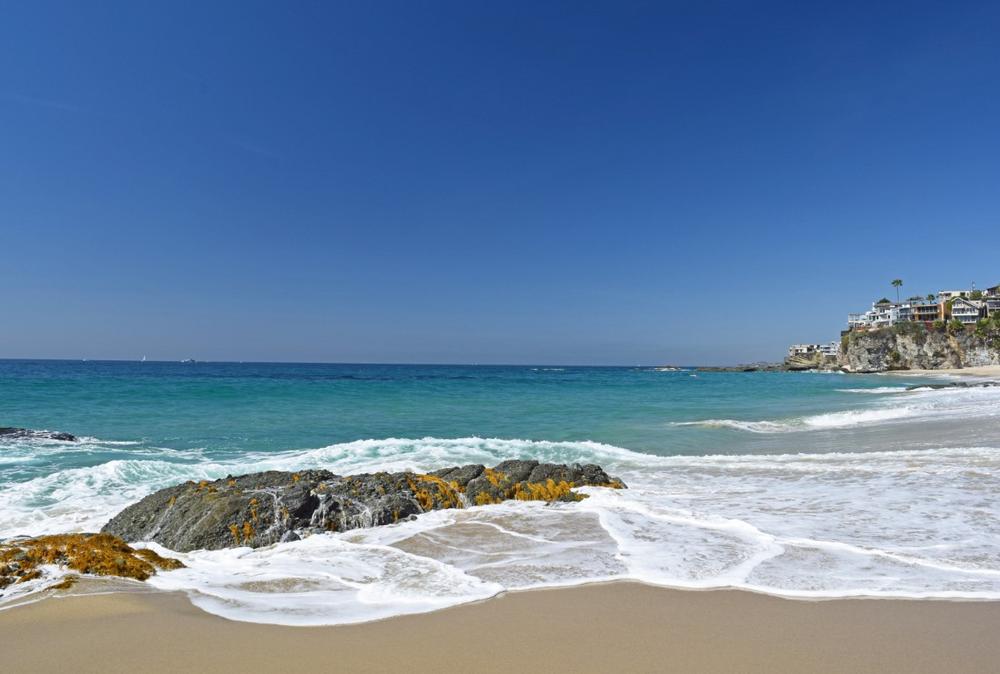
11. Laguna Beach
I thought this place was a dazzling slice of the California coast and it quickly became one of my favorite beaches to drive to from LA when I moved here.
It's such a creative seaside village where golden coves meet rugged bluffs, and art seems to spill out of every gallery, garden, and festival tent. The whole place had this breezy, artsy charm that felt equal parts laid-back surf town and sophisticated coastal retreat.
Just an hour’s drive south of Los Angeles (or 90 minutes from San Diego), I settled in for a few sun-dappled days. The rhythm was perfectly balanced: I strolled the palm-lined boardwalk at Main Beach, wandered into tucked-away coves like Victoria Beach with its whimsical “pirate tower” and hiked the wildflower-covered hills of Crystal Cove State Park where the scent of sagebrush carried on the ocean breeze.
- Location Map
- Location: In southern Orange County, California, along the Pacific Coast between Newport Beach and Dana Point
What I loved best:
In town, I browsed art galleries, discovered sculpted gardens, and caught live music as the sun melted into the horizon. It was the quintessential Southern California escape.
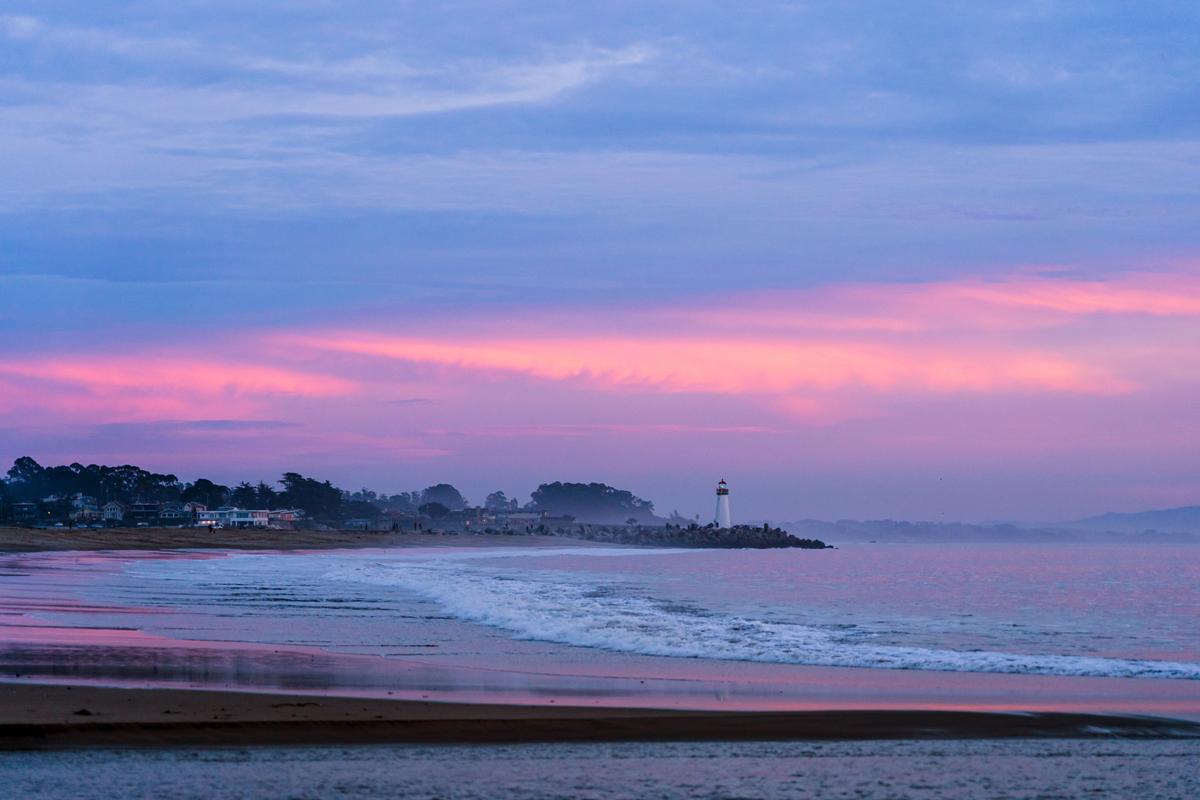
12. Santa Cruz
This was a classic California coastal escape with a playful heart. I was charmed by a mix of surf culture, redwood forests, and a quirky bohemian vibe that felt both nostalgic and free-spirited. Between its historic boardwalk, scenic bluffs, and funky downtown streets, it had that “endless summer” energy that instantly put me in vacation mode.
Just about 75 minutes south of San Francisco, I spent three breezy days at 3-star Hyatt Place Santa Cruz exploring its mix of shoreline and inland charm. My mornings started with coffee on the Santa Cruz Wharf, watching sea lions lounge under the pilings. Afternoons meant wandering the Santa Cruz Beach Boardwalk, a timeless amusement park where the vintage wooden rollercoaster rattled above the sand. I biked along the dramatic West Cliff Drive, stopping to watch surfers carve waves at the legendary Steamer Lane, and even ducked inland for a half-day hike beneath the towering redwoods of Henry Cowell Redwoods State Park.
- Location: On California’s central coast in Santa Cruz County, along Monterey Bay and the Pacific Ocean
- Location Map
What I loved best:
Evenings wound down in the lively downtown, where street performers, indie bookstores, and farm-to-table bistros kept the energy buzzing.
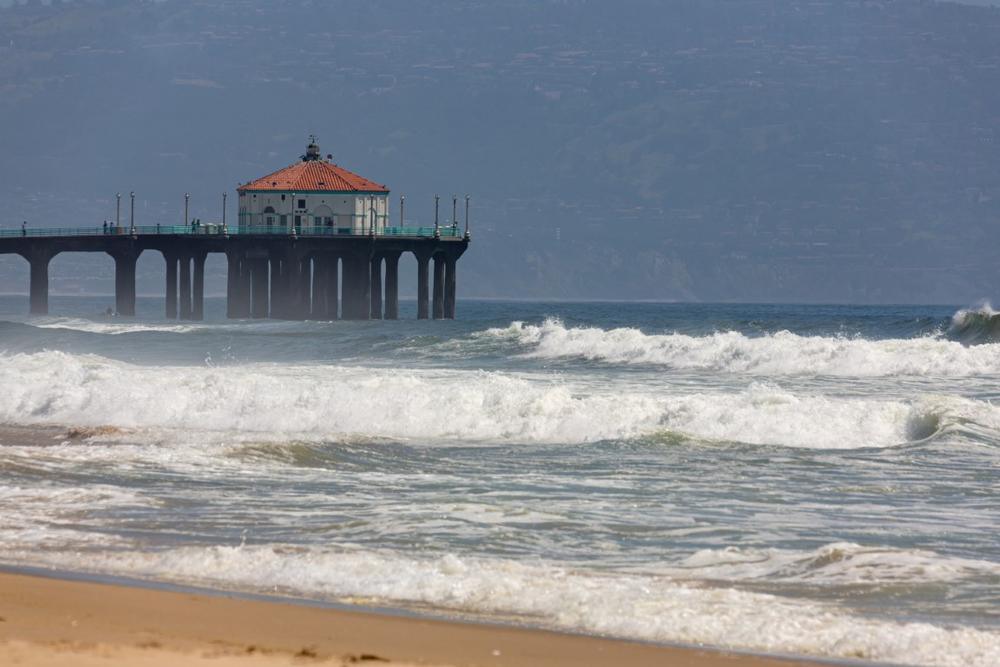
13. Manhattan Beach
This is one of my favorite beach spots for ocean scenery and a cool pier for watching waves roll in. Here surfboards are just as common as beach cruisers!
In addition, I enjoy visiting the adjacent laid-back seaside town where golden sand meets palm-lined boulevards. It had this breezy, sun-kissed vibe that blended upscale elegance with genuine California surf culture.
- Location: In Los Angeles County, California, along the South Bay coastline of the Pacific Ocean
- Location Map
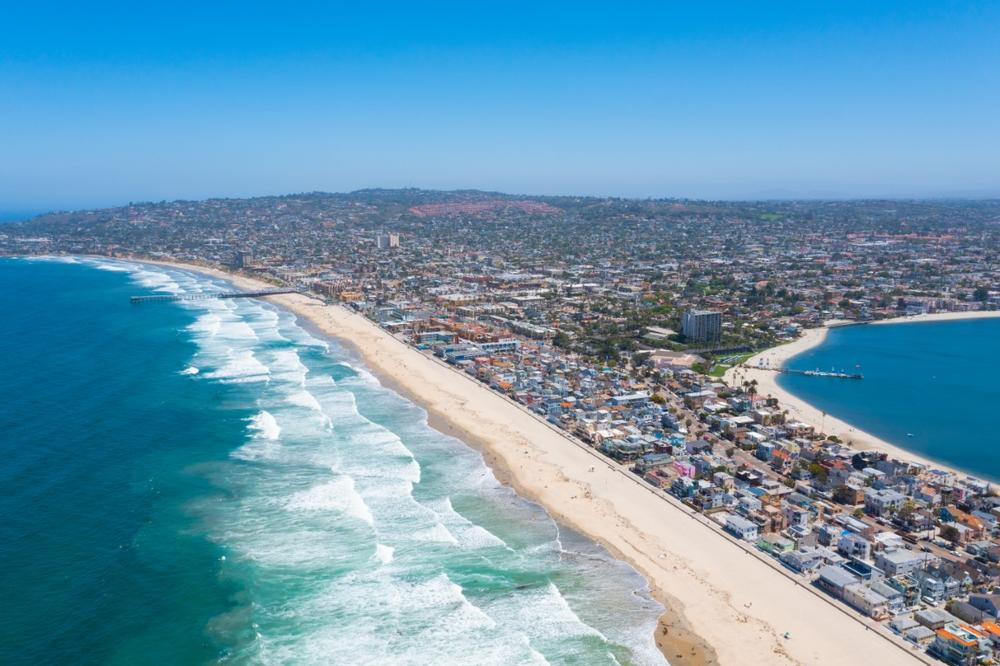
14. Mission Beach
I loved how this beach captured the quintessential San Diego vibe with wide sandy shores, lively boardwalk energy, and an easy-going surf culture. For me, every moment felt sun-soaked and carefree here!
- Location: In San Diego, California, on a narrow strip of land between the Pacific Ocean and Mission Bay
- Location Map
- Mission Beach website
What I loved best:
It’s that perfect blend of beach-town fun and coastal relaxation, where I can spend the morning surfing, the afternoon biking along the ocean, and the evening watching the sunset.
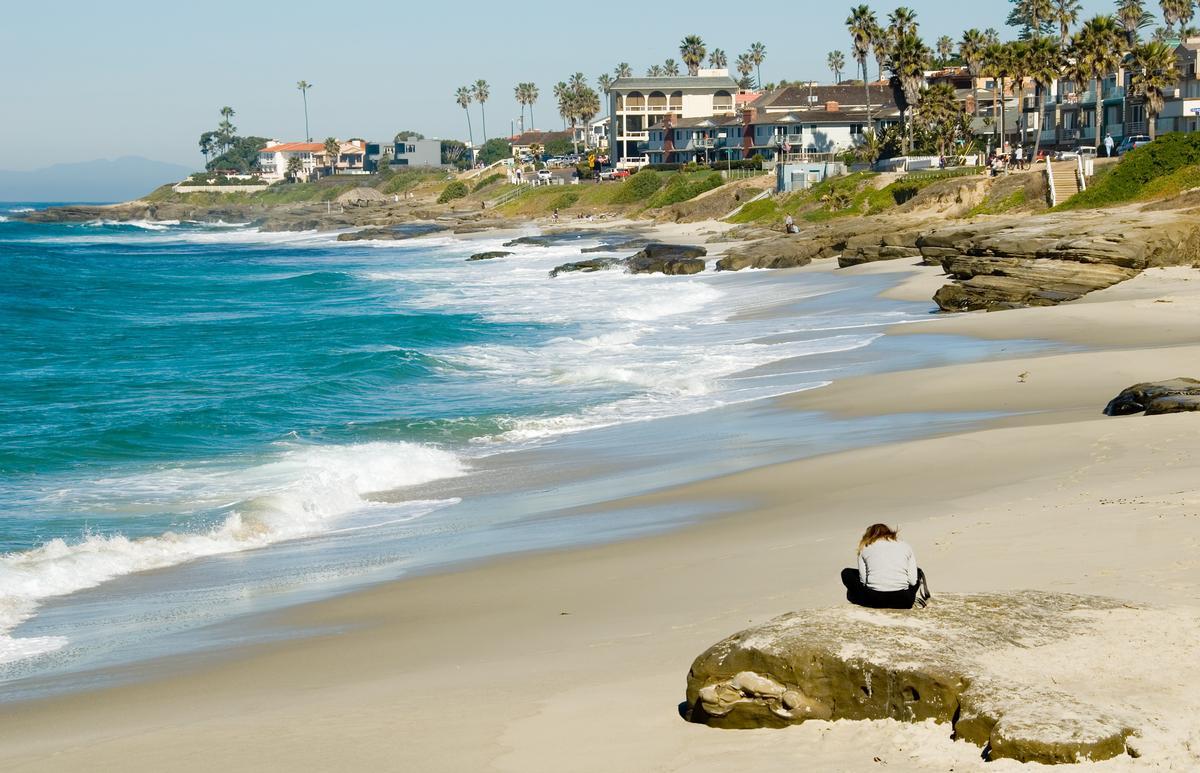
15. Windansea Beach
I think that this beach is the very definition of classic La Jolla cool! I fell for its rugged, picturesque shoreline where powerful surf meets sculpted sandstone.
- Location: In La Jolla, San Diego, California, along Neptune Place on the Pacific Coast
- Windansea Beach website
- Location Map
What I loved best:
I think it's one of the best beaches in California because of its uniqueness. It felt more untamed and intimate than nearby coves. It's a place where locals gather under the iconic palm-roofed hut to watch waves crash and sunsets blaze across the horizon.
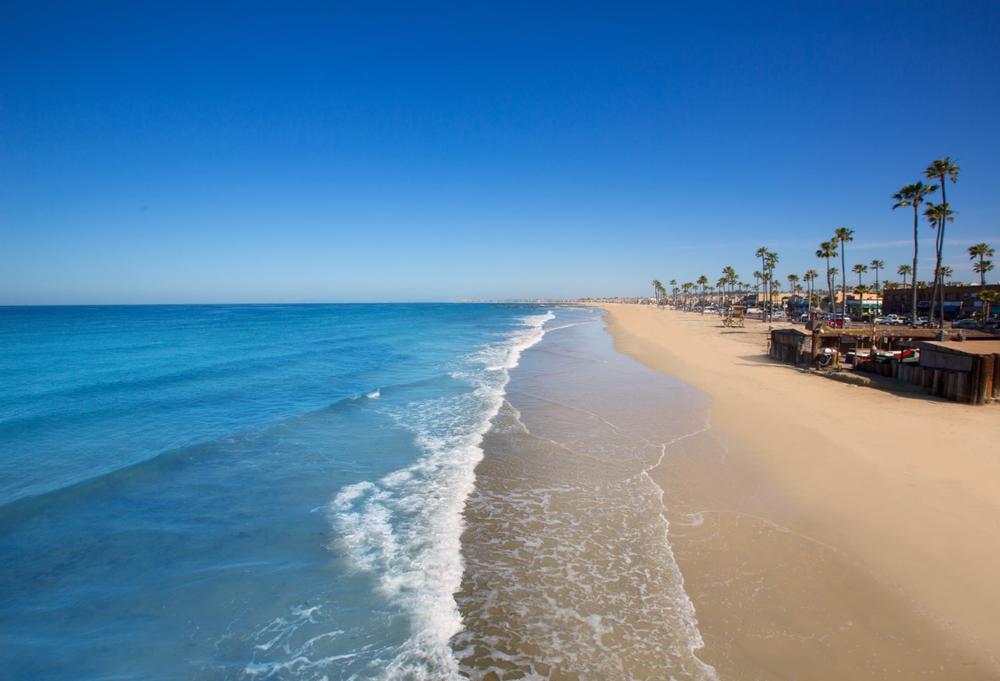
16. Newport Beach
I thought this place was pure Southern California elegance by the sea with its wide sandy beaches, and a harbor dotted with yachts. The beach had a polished yet playful energy that made it feel like a resort town with real local charm.
- Location: In Orange County, California, along the Pacific Coast between Huntington Beach and Laguna Beach
- Location Map
What I loved best:
Between its iconic piers, island escapes, and lively coastal village vibe, I loved how this place struck a perfect balance between upscale relaxation and fun-in-the-sun adventure.
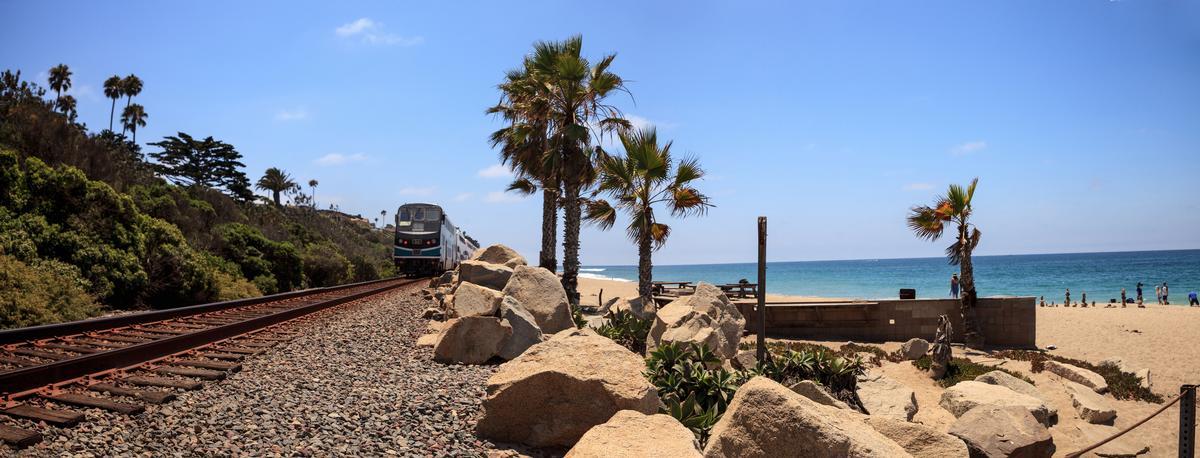
17. San Clemente State Beach
I thought this beach was the perfect embodiment of Southern California’s golden coast. I was charmed by its rolling bluffs draped in wildflowers, wide sandy shores, and that laid-back surf-town spirit. This is my favorite beach in San Clemente that makes you want to kick off your shoes and stay awhile.
- Location: In San Clemente, California, along southern Orange County’s Pacific coastline near the border with San Diego County
- San Clemente State Beach website
- Location Map
What I loved best:
My personal highlight was a rugged natural beauty softened by the warm, welcoming vibe of San Clemente itself.

18. Torrey Pines State Natural Reserve
This is a rare place where sculpted sandstone cliffs, wind-bent pines, and the endless Pacific all come together in a harmony of wild beauty. It felt untouched and serene, with trails that carried me from fragrant chaparral ridges down to a wide, glistening beach...Just a 20-minute drive north of downtown San Diego, I devoted a full day here and was glad I did.
- Location: In La Jolla, San Diego, California, along the Pacific Coast between Del Mar and Torrey Pines State Beach
- Torrey Pines State Natural Reserve website
- Location Map
What I loved best:
My morning began on the Guy Fleming Trail, where sweeping viewpoints revealed dramatic cliffs and turquoise waters far below. From there, I wandered along the Beach Trail.
Best Beaches on California's Central Coast
When it comes to California's Central Coast beaches, I have to say that I was surprised by how underrated they are. In fact, some of my favorite West Coast beaches are located in this area and I hope you will enjoy them too.
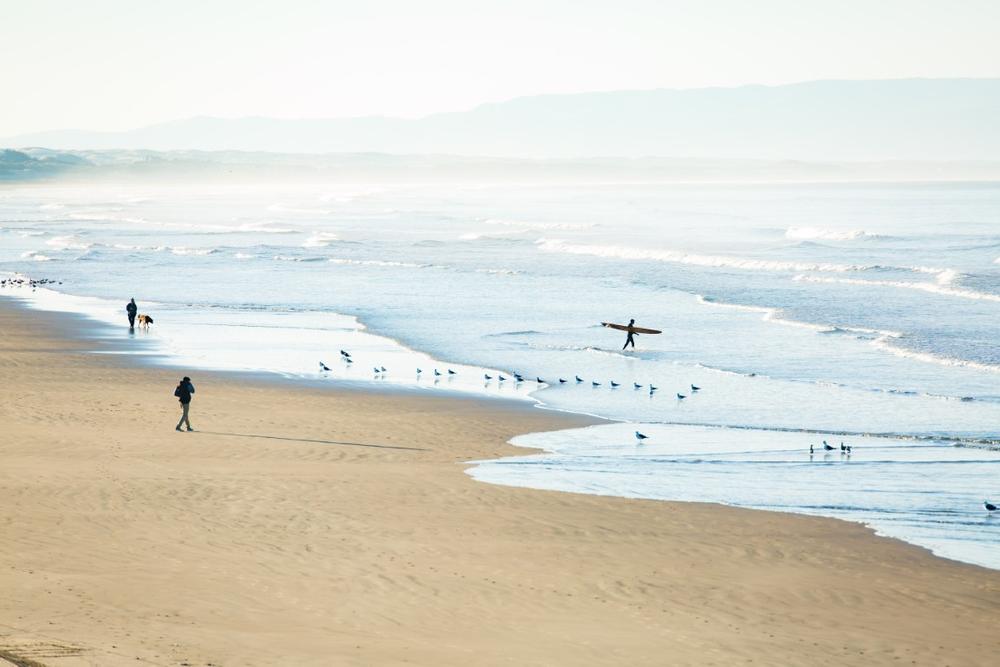
19. Pismo State Beach, Central Coast
This is classic Central California — wide, golden sand stretching for miles, waves rolling in steady and strong, and a breezy, small-town vibe that felt both nostalgic and unpretentious.
- Location: In San Luis Obispo County, California, along the Central Coast between Pismo Beach and Oceano on the Pacific Ocean
- Pismo State Beach website
- Location Map
What I loved best:
It had that timeless beach energy where kite flyers, clamming families, surfers, and campers all seemed to find their place under the endless sky.

20. Moonstone Beach, Cambria
This is my favorite beach on California's Central Coast! Why? Moonstone Beach in Cambria is a place where rugged California coastline meets small-town charm. I adored this windswept, romantic stretch of shoreline lined with smooth wave-polished pebbles. If you look closely, you can find the occasional shimmering moonstone after which it's named. I also love how it's framed by dramatic bluffs and Monterey pines. It’s not a wide, sunbathing-style beach, but instead one for wandering, beachcombing, and letting the salty breeze and rhythmic surf wash over you.
- Location: In Cambria, California, along the Central Coast on Moonstone Beach Drive overlooking the Pacific Ocean
- Location Map
What I loved best:
I found a sense of quiet magic here, especially at sunset when the whole coast glows amber.

21. Pfeiffer Beach
For me, this was one of California’s most otherworldly stretches of shoreline — a hidden Big Sur treasure where rugged cliffs, sea-carved rock formations, and surreal purple-tinted sands created a wild, untamed beauty. It felt secretive and magical, like stumbling upon a place that nature had designed as its own masterpiece.
- Location: In Big Sur, California, off Sycamore Canyon Road within the Los Padres National Forest along the Pacific coast
- Location Map
- Pfeiffer Beach website
What I loved best:
I wandered along the beach until I reached the iconic Keyhole Arch, a massive rock formation pierced by a natural window where, at sunset, the golden light pours through in a breathtaking glow.
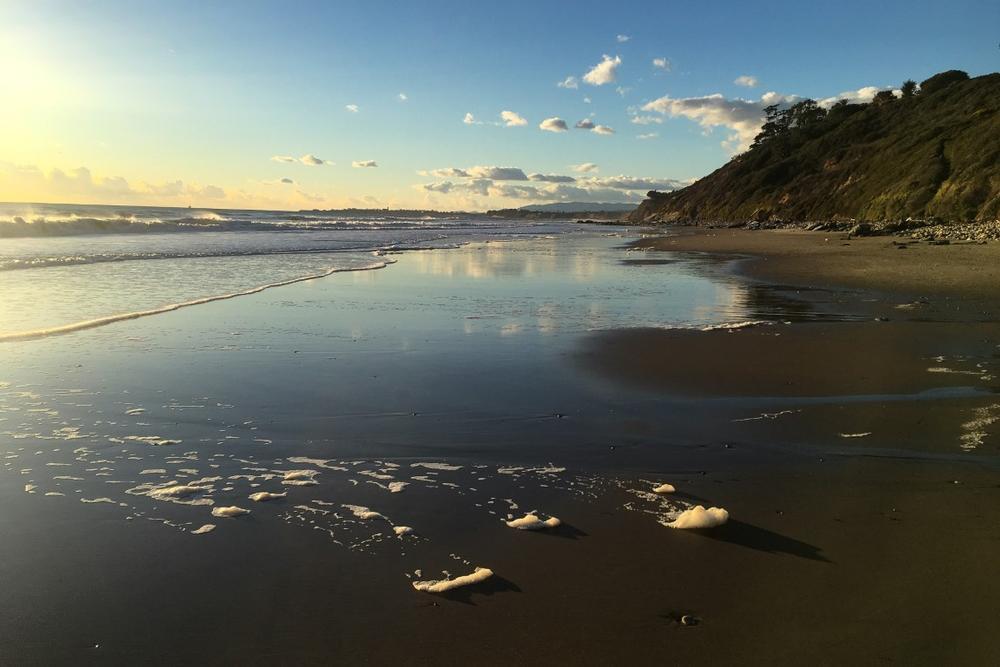
22. Arroyo Burro Beach County Park
When I visited this month, I thought this beach was the perfect blend of relaxed California charm and natural coastal beauty. I fell for this wide, sunlit stretch of sand framed by rugged bluffs and gentle waves, with a community feel that made it as beloved by locals as it was welcoming to visitors.
- Location: In Santa Barbara, California, along the Pacific Coast just west of the city’s Mesa neighborhood
- Location Map
- Arroyo Burro Beach County Park website
What I loved best:
It had this effortlessly inviting vibe where families, surfers, dog-walkers, and sunset-watchers all seemed to share the shoreline in perfect harmony.
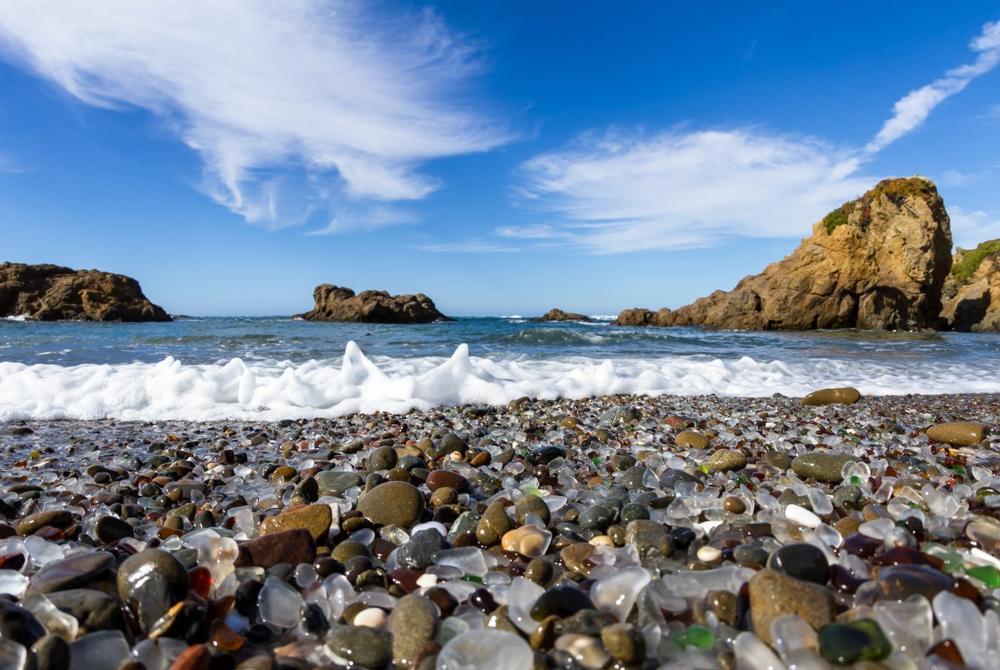
23. Glass Beach, Central Coast
It’s less about swimming here (the water is cold and waves can be rough) but this was my favorite California beach for beachcombing, and soaking in the rugged, dramatic character of the North Coast.
Just outside the town of Fort Bragg in Mendocino County, Glass Beach was the perfect stop along Highway 1 on my Northern California road trip. I loved seeing the rocky coves, and walking along the coastal bluffs where wildflowers framed sweeping Pacific views.
- Location: In Fort Bragg, California, along the Mendocino Coast within MacKerricher State Park on the Pacific Ocean
- Map & Directions
What I loved best:
Peering into tidepools filled with starfish and anemones was my personal highlight.
My Favorite Northern California Beaches
Of all the beaches in California, I'm least familiar with the northern part of the state. I'm planning a four week road trip again there soon, but for now, here are my favorite beaches in Northern California so far...

24. Stinson Beach, Northern California
This was Northern California at its most timeless, a long ribbon of soft sand backed by rolling hills and rugged bluffs, where the Pacific felt both wild and welcoming.
- Location: In Marin County, California, along the Pacific Coast just north of San Francisco and adjacent to Mount Tamalpais
- Location Map
What I loved best:
It carried that easy, barefoot charm of a true beach town, with just enough local flavor to make it feel like a beloved hideaway.
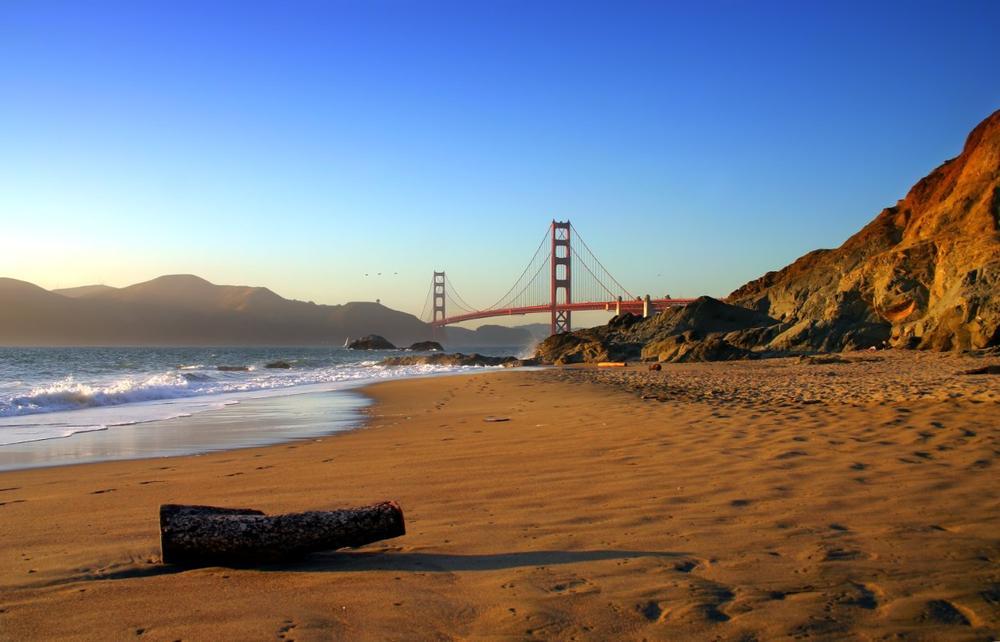
25. Baker Beach
This is one of San Francisco’s most breathtaking escapes, a wild, windswept stretch of sand where the Pacific meets the city, and the Golden Gate Bridge rises dramatically on the horizon.
- Location: In San Francisco, California, on the northwest shoreline below the Presidio, overlooking the Pacific Ocean and the Golden Gate Bridge
- Baker Beach website
What I loved best:
Baker Beach is one of my favorite beaches to visit in Northern California. I love everything here - the scenery, the breeze, that it's close to so many things to see and do...
In addition, it had that perfect mix of rugged natural beauty and iconic urban backdrop that felt uniquely San Francisco!
Booking Checklist
1. Book Your Flight - I use Expedia because I like their mobile app with my itinerary. They've helped me re-book flights on many occasions. Once you reach their Gold tier, support is especially good.
2. Book Your Hotel - I use Booking.com or Expedia, depending on my destination.
3. Book Your Rental Car - I use Expedia.
4. Book your tours on Viator or Get Your Guide.
5. If you are planning to visit more than three national parks in the next 12 months, buy the America the Beautiful Pass.
